
Ancient Armenia |
NATURAL WONDERS
SEVAN
|
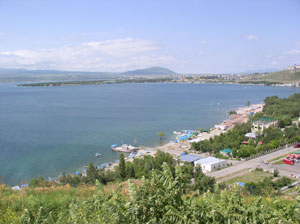 |
Sevan Lake is the largest
among high mountain freshwater lakes, and the largest in Transcaucasia
surrounded by Pambak, Sevan, Vardenis, Geghama Mountains.
Till the water level got low
in 1949 for industrial aims, the surface of the lake was1416 sq.m. the
maximum depth was 81m, the water capacity was 39 cubic meter. It is
1898m above sea level, there are 28 rivers pouring into it and Hrazdan
River springs from it.
|
In the end of 20th century was
built Arpa-Sevan tunnel 48 km length to keep the lake level. This building
is one of engineering wonders of its time.
Sevan in the largest resort. The
lake surrounding is also rich with historical monuments. But the most
special is the churches on the Sevan Island (878 AD), in strict
architectural style and in attractive view. The other one is Lchashen, city
built in 2000 BC.
In Sevan Lake lives “Ishkhan”
which belongs to trout family. It is very tasty and very expensive. There
have been trials to rear ishkhan in different climates, but they failed.
Ishkhan weighs 150g and 2-3 year old ishkhan weighs 20 kg. It is said that
the president of former Soviet Union Khrushchev tasted ishkhan and liked it
so much that ordered to build Arpa-Sevan tunnel to save ishkhan.
|
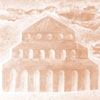
7 wonders of Armenia |
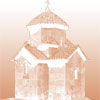
Early Middle-Ages |
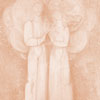
Ethnography |
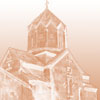
Developed
Middle-Ages |
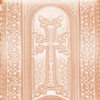
Stone symphony |
|
Tours
News
Contacts |
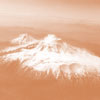
Natural wonders |
DEVIL'S BRIDGE
(SATANI KAMURJ)
|
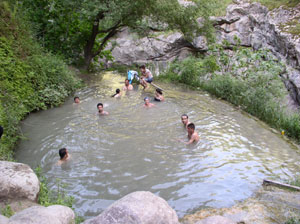
|
There is one of nature wonders of
Armenia on Vorotan River – Satanayi kamurj (Satana’s Bridge). It is an
amazing natural bridge hung on the river, with 150m width and 170 m length.
The bridge is made of
travertine and and it has flat surface, on which is passing Goris-Tatev
road. The bridge height
above the river level is 50 m.
There are travertine pillars hanging under it, huge stalactites. There are
naturally carbonated mineral springs on the bridge and around it, the
quantity of their water is 500-600 l per day and its temperature is 25 C°.
There were built little pools
near the springs, where the population uses the water as a cure. Now there
is little water flowing under Satana’s Bridge, as the main part of the river
water is used for Tatev hydro plant.
|
BEARS' CAVE
|
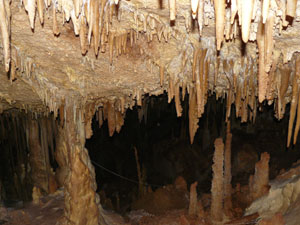
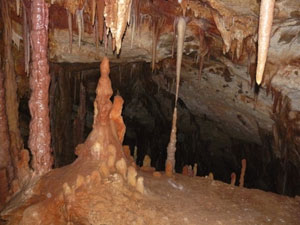
|
Arjer cave is located in Vayots
Dzor district south-east from Yerevan, near Noravanq church complex. The
only possible way to get there is to walk from Noravanq 30 minutes through
narrow paths. But these difficulties entirely render watching the caves,
the wonder of the nature.
Arjers cave (Bears’ cave) has
3.5km length and depth more than 700m to the sky, it is entirely with
coral like varicolored huge halls To this cave with incredible shapes and
colors gives more mystery the cave river and the underground lake. The
underground syphon makes this natural amazing world more interesting, It is
indescribably impressive the view of Arpa river defile and Noravanq church.
|
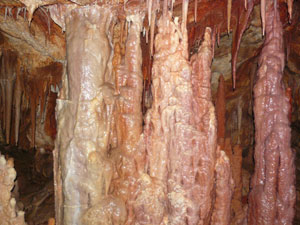
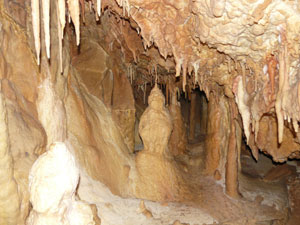 |
KHOSROV' RESERVE - FOREST
|
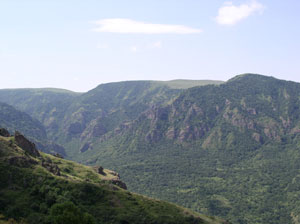
|
In humankind history there are
many testimonies about that there have been built cisterns, canals, and even
artificial lakes by several kings in several countries. But maybe all will agree
if we say Armenia is exceptional in this case, Armenian mind is original in all
cases.
King Khosrov (330 – 338 AD) during
his short reign he stayed in Armenians memory owing to his two deeds: he founded
Dvin capital in 335, which had been Armenian capital for 630 years and was one
of the biggest cities and gave way only to Baghdad, and he planted a huge forest
near the capital and filled with animals for hunting.
|
This forest exists till today and
it is called Khosrov's forest, it is the oldest artificial forest in the world,
it is 1700 years old. It is state reserve now founded in 1958 with 29200 hectare
square. It is located on the southern slopes of Geghama Mountains on 850-2300 m
absolute height.
|
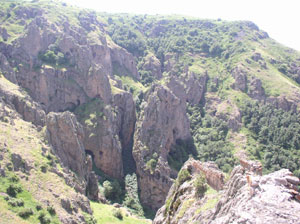
|
In oaken island like forest there
are HACENI, seven kinds of pear tree, 9 kinds of mountain ash. In the forest
there have been found over 1415 kinds of plants. For comparison we can mention
that flora of St. Petersburg contains 800 kinds.
From animals there are Caucasian
bear, wolf, wild boar, hare, chamois, goat, and leopard.
|
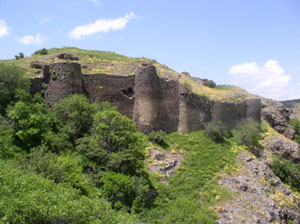
|
In the territory of reserve there
are situated Garni temple and Gekhi (Kaqavaberd) fortress.
LORI CANYON
Lori canyon is spacious understanding
it includes a few river defiles and Debed river canyon. The particularly of this
place is giant mountains covered with oak and rye forests.
The rivers are mountainous, mighty
cleaving the mountains make canyons that are peculiar only to Armenia. Some
canyons are so unique, that have inspired many artists, and there are some
fearful.
Lori has always been a place of
mysterious stories. There are places where a man hasn’t ever stepped. By the way
there are some fearful.
Lori has always been a place of
mysterious stories. There are places where a man hasn’t ever stepped. By the way
there are many such places in Armenia, but Lori is most mysterious. Mighty
fortresses and castles on tops of mountains, abbies and temples make this place
more beautiful.
Lori is ecologically the clearest
place in Armenia and it attracts even the most whimsical persons.
SKHTORASHEN
In the cornfield of Skhtorashen
village rises a giant planar tree (is also known as Sosei Tsar), which has
recently received a passport as the oldest tree in the world. It is 2027 years
old. The tree has 44 m2 square hollow and more than 100 people can stand in that
hollow. The height is more that 54 m, which is about 18 storied building. The
planar tree in Skhtorashen with its enormous sizes surpasses even the trees of
Kos village in Aegean Sea, as well as the trees in Turquoise canyon near
Ashkhabad. That’s why Karabaghyans turned it to a holy and sacred place for
pilgrimage. There is a cold spring flowing out from underground at the tree:
Tnjru spring. According to lithographer inscription the spring has been made by
Hovhannes Kisabekyan, Nerses Musaelyan and Manas Gasparyan from Skhtorashen.
At a distance of 100 m from Tnjru
spring spreads ancient Skhtorashen village. There is still conserved one wave
church grave-yard and ruins of other buildings. The church was built in 16th
century, some of epitaphs in grave-yard belong to older times. New Skhtorashen
is situated on the same slope. The church here was built in 20th
century.
JERMUK
|
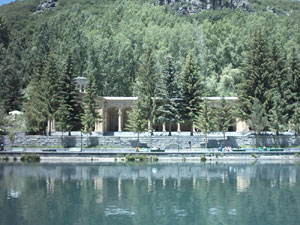
|
As a part of former Soviet Armenia
it was an impressive health-resort zone. But in Armenia compare to other regions
a medical health – improving course was developed.
Among the most famous health
resorts in Armenia are resorts in Jermuk, Dilijan, Hanqavan, Arzni.
Most fascinating is that in the
Armenian highland, which is in a zone of volcanic activity, thermal springs are
always appearing on the surface in different places, which
are known as Jermajur (hot water) from
time immemorial. Ever since B.C. Artashes and
Arshakuni kings had special sunshades by the thermal springs, they knew
for sure about the medical properties of that springs.
|
Among such thermal springs the
most famous is Jermuk. Today the legends about the thermal springs of Jermuk are
arising from the reality. Relying on numerous experiences the medical properties
of thermal springs is confirmed, a special medical methodology is developed too.
The health resort of Jermuk
already has a - 100 - year world – wide fame. There are 6 major
mineral springs are running in sum, which combined
power is 17 l/sec, and the temperature of water is +35◦C - +54◦C.
It is significant that in mineral waters of Jermuk the content of carbonic acid
is greater (2g/l) than it is in Karlov’s Vari or in any such resort.
In the table below
you can see a general comparison of waters of Jermuk and waters of Karlov’s Vari.
|
|
Karlov’s Vari
(by S. Ovchinnikov) |
Jermuk #9 |
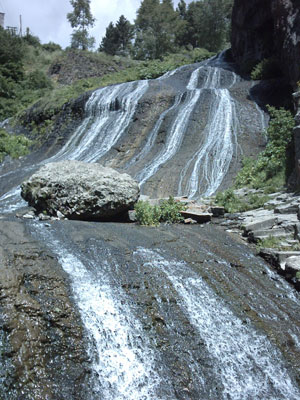
|
|
Cations |
|
|
|
|
0.0033g |
0.0037 |
|
|
0.0001g |
- - - |
|
|
0.1042g |
0.0890 |
|
|
1.7180g |
1.2110 |
|
|
0.0465g |
0.0744 |
|
|
0.1025g |
0.1480 |
|
|
0.0003g |
0.0038 |
|
|
0.0001g |
0.0008 |
|
Anions |
|
|
|
|
0.6170g |
0.4757 |
|
|
0.0014g |
0.00005 |
|
|
0.0024g |
0.0001 |
|
|
1.6620g |
0.9000 |
|
|
0.0001g |
0.0150 |
|
|
2.1000g |
2.2430 |
|
|
0.0001g |
- - - |
|
|
0.4-0.7g |
1.5-2.0 |
|
|
5.3980g |
3.7920 |
|
|
72◦C |
64.4◦C |
The process of medical
treatment consists of 3 stages.
1.
Water-base
treatment lasts 3-5 days. It is used in purpose of climate- adopting of the
patents. Overall personal details are being made up about a patient, about his
characteristics and functional experiences are being made.
2.
The main
stage. It lasts 18-20 days, and a multilateral treatment is performed. And not
only the main treatment factor is used but also other subsidiary treatment
methods are used.
3.
The final
stage. A general relaxation takes place, and on the last day no treatments are
being assigned.
The following diseases
are treated:
 |
cholecystitis |
 |
nephritic diseases |
 |
gastritis of gallbladder,
chronic gastritis lexatsoran (?) |
 |
stomach and duodenum diseases |
 |
enterocolitis |
 |
chronic pancreatitis |
 |
urine sand |
 |
and also cervical radiculitis,
thoracal radiculitis, lumbosacral radiculitis and diabetes cure |
Such a multilateral
treatment is attended by a wonderful mountainous climate and relief
embellishments. Jermuk is a
heavenly land and a
place of magic rejuvenation.
|
![]()

![]()